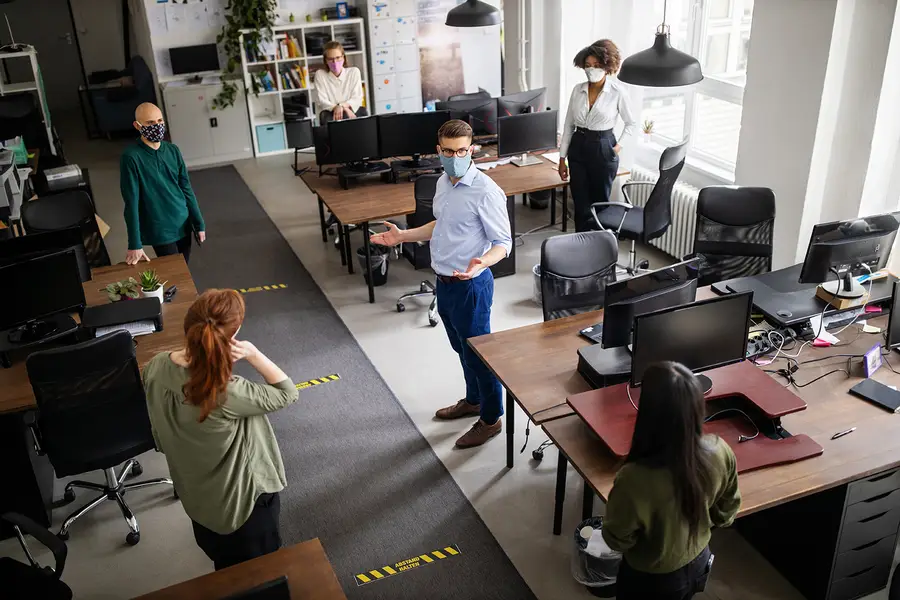
The global pandemic is not over. Yet, more than two years after the world went into lockdown, many of the personal safety features deployed to stop the spread of COVID-19 are fading from use. In public buildings, people go without masks, duck around clear plastic barriers, and walk right over floor stickers designed to encourage social distancing.
Fortunately, there are other tools we can use in indoor environments to reduce the risk of infection during this pandemic and in the future. At RTI, with funding from the U.S. Department of Energy, we have been investigating a technology that uses the germ-killing power of ultraviolet light. We believe this technology, known as germicidal ultraviolet, or GUV, has tremendous potential to make indoor air cleaner and safer.
GUV has been around for decades, and is effective against viruses, mold, and bacteria. However, until recently, GUV was based on fluorescent lamps, which are inefficient, hard to deploy, and loaded with harmful mercury. The latest GUV light sources use light-emitting diodes – similar to the LED lighting that has grown popular for many other uses. UV LED technology offers the possibility of small, local sources that could be used to disinfect air and surfaces while using much less energy.
UV LED holds promise, but needs further development to become a widespread solution to COVID-19 or other infectious diseases. This has been the focus of RTI’s recent work for the Department of Energy. We brought to the project more than a decade of partnership with LED manufacturers, during which we have helped foster the development of these highly efficient, long-lasting, low-carbon-footprint sources of light. The GUV project also builds on our longstanding work in indoor air quality, leveraging the expertise of teams specializing in air filtration, aerosol fate and transport, and personal protective equipment.
To help advance UV LED technology, RTI teamed up with the LSRC, a DOE-sponsored network of leading lighting manufacturers, to identify commercial products to evaluate. Following initial benchmarking, we studied the long-term performance and reliability of each UV LED product. Our findings, recently released by the DOE, provide an important guide to existing UV LED products – and point the way to the needed improvements that will help this technology reach its potential. According to our analysis, within 5 to 10 years of further development, UV LED lights will increase their disinfecting power by producing more emissions across the UV-C band.
A decade ago, LED lighting was an emerging technology, and COVID-19 was completely unknown. Now, after we have learned to apply LEDs in offices, automobiles, cell phones, computers, and elsewhere, the pandemic has created demand for yet another application of this beneficial technology.
This is a true lightbulb moment, a convergence of a rising technology and a clear need. During this pandemic and the unknown pandemics to come, outfitting buildings with “always-on” protection will be a crucial way to protect public health and safety. So keep watching UV LED technology. We believe it is a new source of not just light, but hope in our challenging times.
